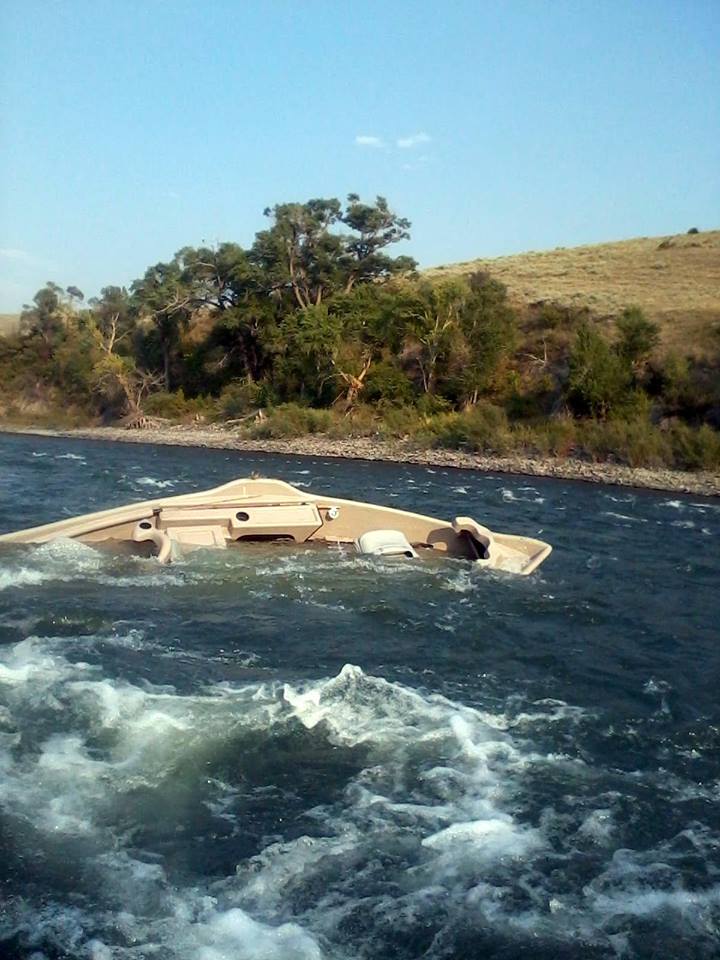Great oarsmen make rowing look easy. Rowing skills require constant practice. You will never become perfect and there will always be something new to learn. As soon as you think you know it all, the river will teach you a new lesson.
One of the reasons to hire a river guide is safety. With an experienced oarsman, you can enjoy the day and catch fish. I prefer guides with a sweaty old fishing hat and a dirty, scratched up, well used boat. Every ding, scratch, and dent has taught the guide a valuable lesson.
After you buy a new drift boat or raft, hire a guide to teach you how to use it. Your money and time will be well spent. Learn how to navigate, position, and power your craft.
The best lessons I learned were:
- Row away from the danger
- Maintain control by rowing upstream to go downstream
- “Cant” or angle your craft to “Ferry” or travel across currents
- Anticipate and adjust to the river before the obstacle
We all learn best from mistakes. Everyone ‘drills” a big unseen rock or screws up. The key is to learn from the mistake.
 Great oarsmen navigate the water upstream well ahead of the dangerous or technical water. Rivers at all water levels can bite you if you are not paying attention. Polaroid glasses help you to see the colors of the water and its hidden obstacles. Every wave and rapid is caused by a rock, log, or topography in the river.
Great oarsmen navigate the water upstream well ahead of the dangerous or technical water. Rivers at all water levels can bite you if you are not paying attention. Polaroid glasses help you to see the colors of the water and its hidden obstacles. Every wave and rapid is caused by a rock, log, or topography in the river.
Josh Stanish, a long time Montana Guide, enjoyed a swim in the Madison River’s Beartrap Canyon’s “Kitchen Sink” rapid during a routine low water summer day float. Josh is an outstanding oarsman, guide, and fisherman. This water was familiar and at a lower level. As he approached the technical water, he was enjoying a refreshment and was unafraid of the rapid. A quick “Brain Fart Moment” caused him to “swim with the fishes”. After retrieving his dog, gear, and raft, he started to identify his mistakes and share them with others. Fortunately, a safe lesson was learned.
Drifting downstream requires you to row upstream. You are facing downstream when rowing to see what you need to avoid. Everything seems opposite and requires training to feel and understand the boat and river. In order to navigate your craft, you have to slow things down.
“Canting” or angling your boat is necessary to move from bank to bank. I usually maintain a 45 degree angle when floating downstream. The stern is always pointed in the direction I choose, to move away from danger.
The crafts “inertia”, or downstream movement, requires you to begin “Ferrying” your boat across the current, well upstream from the obstacle. You will not be able to row directly upstream in a current. At best, you may be able to hold the boat in place.
You can’t turn or stop a drift boat or raft on a dime. Drifting crafts don’t respond immediately from an oar or paddle stroke. Several strokes are often required to influence drift direction or speed. Anchors will drag before they hold. Heavier wooden or older fiberglass boats require even more energy to navigate. Think ahead, anticipate, and act well before the obstacle is upon you.
If you are not alert, the river will teach you a lesson. Water is dangerous at all times of the year. You can drown from a teaspoon of water. Bragging rights come only from experience and good sense. Most boat wrecks happen because of lack of training and inattention. Alcohol and stupidity don’t help. The oarsman should be considered the “designated driver”. Life vests need to be worn or available at all times.
Become a responsible and safe oarsman by “driving” your craft with your eyes and mind wide open. Keep all gear, nets, cameras, and coolers secured and out of the way. Anticipate and avoid a problem before it happens.
One critical rule, when in my boat, is to be seated or secure in the leg stanchions when the boat is in motion. Entry and exiting the boat is when most anglers fall. Always have at least 3 points of contact to the craft. An unexpected bump or shift will cause an accident every time.
As a fisherman, I prefer to fish from the stern fishing station. This allows me to see everything downstream. I have a moment longer to plan a cast and avoid becoming tangled with the bow fisherman. Since I am standing, I am able to help the oarsman navigate more safely and closer to where the fish are feeding.
A great day of fishing from a drift boat is a result of an experienced and seasoned oarsman. The right boat, fly, cast, oar stroke, or experience helps to create the perfect drift.

(Written by Montana Grant; Photo by Montana Grant)